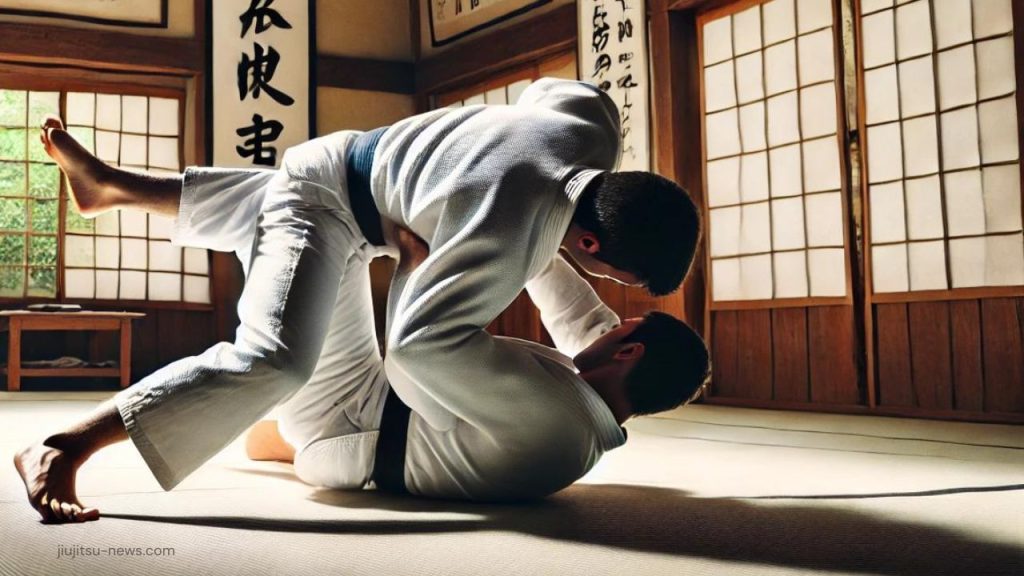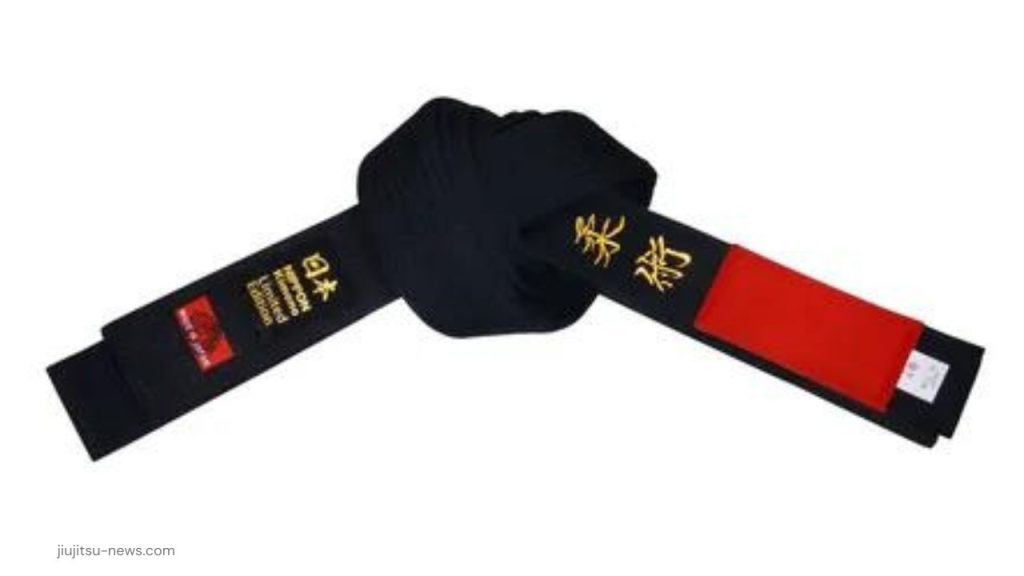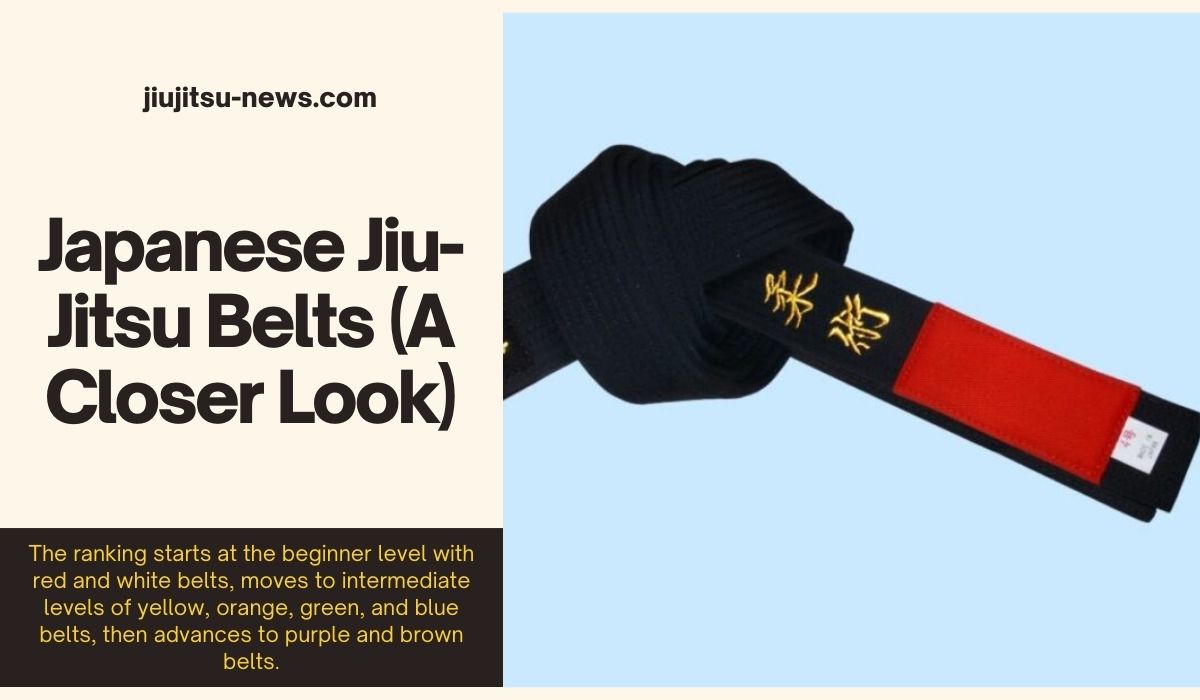Japanese Jiu-Jitsu is a popular martial art dating back to the time of the Samurai. It uses striking and grappling techniques to defeat opponents. The art uses a belt ranking system to indicate a practitioner’s experience level.
The ranking starts at the beginner level with red and white belts, moves to intermediate levels of yellow, orange, green, and blue belts, then advances to purple and brown belts.
Learn more about the Japanese Jiu-Jitsu belt ranking system below.
What Is Japanese Jiu-Jitsu?

Japanese Jiu-Jitsu, also known as Jujutsu or Jujitsu, is one of the oldest forms of martial arts. It is believed to have been created over 4,000 years ago by Buddhist monks from northern India.
Historically, Japanese Jiu-Jitsu was used by samurai to defend themselves. It is well-known for its joint manipulation, throws, and weapon-fighting techniques.
Japanese Jiu-Jitsu Belts

Jujitsu, like Brazilian jiu-jitsu, uses many belt colors to rank its practitioners. These belts are earned based on a student’s training progression. Each colored belt indicates the student’s ability level.
What follows is a profound description of the belt ranking system in Japanese jiu-jitsu.
Red Belt
The red belt is the first belt granted to jujutsu practitioners in certain dojos. It is usually possible to acquire it within a few weeks or months after training in this martial art.
As a result, before taking their first grade, beginners in Japanese jiu-jitsu will wear a red belt.
In this rank, you’ll become familiar with jujutsu martial arts, including its intensity of training, movements, techniques, etc.
White Belt
The white belt is the second jujutsu rank earned after the red belt. It refers to the 7th kyu rank (7級/七級) in the Japanese jiu-jitsu ranking system.
A jujutsu white belt practitioner focuses on learning basic Japanese jiu-jitsu stance and coordination.
Yellow Belt
The yellow belt is the third jujutsu rank after the white belt. It refers to the 6th kyu rank (6級 / 六級) in the Japanese jiu-jitsu ranking system.
A jujutsu practitioner learns various techniques and moves at the yellow belt rank, including blocks, locks, and throws.
Orange Belt
The orange belt is the 4th Japanese jiu-jitsu rank after the yellow belt. It refers to the 5th kyu rank (5級 / 五級) in the Japanese jujutsu ranking system.
At the orange belt rank, a jujutsu student understands and masters more technical moves.
Green Belt
The green belt is the fifth jujutsu rank after the orange belt. It refers to the fourth kyu rank (4級/四級) in the Japanese jujutsu ranking system.
At the green belt rank, a Japanese ju-jitsu practitioner moves to application. Using his past learning, he creates a compelling game with effective blocks, throws, and finishing techniques.
Blue belt
The blue belt is the sixth jujutsu rank after the green belt. It refers to the third kyu rank (3級 / 三級) in the Japanese jujutsu ranking system.
At the blue belt level, a Japanese jiu-jitsu student understands the numerous techniques learned in the past and can execute them correctly (blocks, throws, etc.).
Furthermore, blue belt trainees better comprehend technique setups and can change methods as needed.
Purple Belt
The purple belt is the 7th jujutsu rank after the blue belt. It refers to the 2nd kyu rank (2級 / 二級) in the Japanese jujutsu ranking system.
A Japanese jiu-jitsu student with a purple belt rating has achieved high precision. Consequently, he can execute the various techniques (blocks, kicks, advanced throws, etc.) with crispness, cleanliness, and accuracy.
Brown Belt
The brown belt is the 8th jujutsu rank after the purple belt. It refers to the 1st kyu rank (1級 / 一級) in the Japanese jujutsu ranking system.
A Japanese jiu-jitsu student has achieved effectiveness at the brown belt rank. Consequently, he knows all tactics and can execute them correctly, displaying the capacity to apply the techniques successfully in a street self-defense scenario.
Black Belt (1st Dan)
The 1st dan black belt is the next belt rank after the brown belt. It refers to the shodan rank (初段) in the Japanese jujutsu ranking system.
Achieving the 1st dan black belt requires years of dedication to the Japanese jujutsu martial art. Yet, it is the lowest black belt degree since this rank contains ten degrees.
Final Thoughts
Japanese jiu-jitsu is one of the best martial arts for self-defense and street fighting. It is one of the oldest martial arts, dating back to the period of the samurai, and has lately gained popularity worldwide.
Japanese jiu-jitsu has a belt ranking system that illustrates the amount of experience of jujutsu practitioners. In sequence, below are the Japanese jiu-jitsu belts:
- Red belt (some dojos).
- White belt.
- Yellow belt.
- Orange belt.
- Green belt.
- Blue belt.
- Purple belt.
- Brown belt.
- Black belt
We hope this information has helped you comprehend the Japanese jujutsu belt grading system. Thanks!
Are you ready to explore the depths of MMA and Jiu-Jitsu? Get insider stories, fight breakdowns, and mindset gems delivered straight to your inbox. Subscribe Now!



